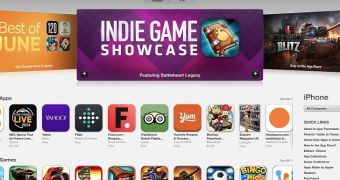Back in 2008, Steve Jobs got on stage to talk about the iPhone SDK and introduce the new AppStore.
"You want to get your app in front of everybody and hopefully they love it and buy it. That's not possible today. Most developers don't have those kinds of resources. Even the big developers would have a hard time getting their app in front of every iPhone user. We're gonna solve that problem today," Steve Jobs said.
Back then, the AppStore was not radically different from what we have today: a native app, coming along with iOS and updated once a year. Apple had two main sections: "Just Added" and "Staff Favorites." There were also two apps promoted at the top, and at the bottom of the screen you could see five buttons: Popular, Categories, Top 50, Search and Updates.
From the beginning, you had the option of downloading the apps wirelessly from the phone or get them from the iTunes App on the computer and side load them using a USB cable.
The AppStore app had a way to let everyone know if there was an update for each downloaded app. Steve Jobs mentioned that the AppStore was going to be the exclusive way to deliver iPhone applications.
The developers were given the liberty to pick the price for their app and keep 70 percent of the revenue. There were no credit card, marketing or hosting fees.
If a developer wanted to set the price to FREE, there were no charges for the user, developer. The only limitations were related to the apps that were showing illegal stuff, porn, malicious apps or the ones that were invading the privacy of the user.
In January 2011, the AppStore had over 9.9 billion downloads and it went up to 15 billion apps just six months later. Four years after launch, there were 1,100,000 third-party apps available in the AppStore.
The last stats came at the end of 2013 and back then, the AppStore users had spent $10 billion in one year alone and they had downloaded three billion apps just in December of 2013. In all these years, developers have earned over $16 billion in revenue. There are now apps for iPhone and iPad.
The AppStore was made popular by the commercials Apple released over the past 6 years, starting with the famous "There's an app for that" tag line.
Apple has been often criticized for the approvals policies, and in some occasions already published apps were taken down due to inappropriate content.
The Apple distribution model has been adopted by other big market players like Nokia, BlackBerry, Microsoft, Google or Samsung.

 14 DAY TRIAL //
14 DAY TRIAL // 
